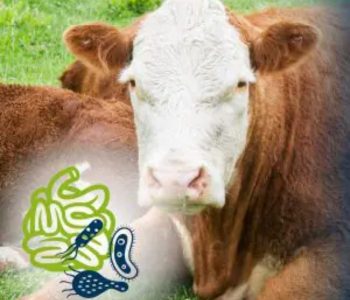The Role of Gut Microbiota in Ruminants: A Key to Digestive Health and Metabolism
The composition of gut microbiota varies with the host, indicating a strong environmental and genetic specificity. The physiology and structure of the ruminant digestive system evolved billions of years ago, ensuring the effective digestion of cellulosic materials and various polysaccharides. The efficiency of this system lies in its design, where ingested food interacts extensively with the microflora.
The Ruminant Digestive System
The ruminant stomach is composed of the rumen, reticulum, omasum, and abomasum. The internal environment of the rumen is divided into different sacs by the reticulo-rumen fold. Ingested food is directed to the rumen via the reticulum, where it is stored for rumination and interacts with the microflora. Saliva plays a crucial role in ingestion and rumination, containing high concentrations of phosphate, potassium, and sodium bicarbonate to buffer acids generated during fermentation. The reticulo-rumen functions as a multi-functional fermentation chamber.
Importance of Gut Microbiota
Ruminants consume plant-based diets rich in complex polysaccharides, making gut microbiota essential for hydrolyzing these compounds. This establishes a symbiotic relationship between the host and the microflora. The reticulo-rumen environment is strictly anaerobic, hosting a diverse microflora that includes eukaryotes, archaea, and bacteria. Rumen fermentation is a complex process, requiring microbial coordination to break down food into simpler compounds for host metabolism.
Microbial Composition and Its Variability
The gut microbiota composition varies by host, reflecting genetic and environmental influences. Studies have shown differences in fecal microbial composition between twins and siblings, suggesting genetic involvement. Microflora composition also varies across intestinal sections, starting in the early life stages of calves. Methanogens and cellulolytic flora appear within the first days of life, highlighting their importance.
Bacteria constitute the largest portion of gut microbiota, aiding in fermentation and plant polymer degradation. The dominant bacterial phyla in the rumen are Proteobacteria, Bacteroidetes, and Firmicutes. Methane production by archaea occurs via cytochrome-mediated or alternative pathways, with hydrogen utilization by methanogens playing a critical role in energy-efficient bacterial fermentation. Protozoa and anaerobic fungi also contribute significantly, while bacteriophages regulate bacterial populations through lysis.
Microbial Imbalance and Digestive Disorders
Disruptions in gut microbiota homogeneity lead to severe digestive and systemic disorders in ruminants. Microbial imbalances can cause metabolic disorders such as bloat, ruminal acidosis, hypoglycemia, diarrhea, gastrointestinal ulcers, and reticuloperitonitis.
Bloat
Ruminal tympany, or bloat, results from excessive gas accumulation in the rumen, commonly seen in animals fed large amounts of grains or forage. It can be categorized as free-gas or frothy bloat. Physical or pathological conditions preventing gas release, along with methanogenic bacterial activity generating methane, hydrogen, and CO2, contribute to this disorder.
Ruminal Acidosis
This disorder arises from excessive consumption of fermentable carbohydrate-rich diets, leading to increased lactic acid production and a sharp drop in rumen pH. Low pH levels destroy gram-negative bacteria, release endotoxins, and disrupt fluid balance and digestion. Severe acidosis can result in liver dysfunction, respiratory diseases, and even death.
Hypoglycemia
Hypoglycemia occurs when glucose uptake is lower than its utilization. Vitamin B12 is crucial for glucose synthesis from propionate. Glucose deficiency is particularly lethal in newborn calves and lambs in cold environments. Animals relying on carbohydrate-deficient diets with fatty acid beta-oxidation inhibitors are prone to hypoglycemia.
Gastrointestinal Ulcers
Ulcers most commonly affect the duodenum and abomasum of dairy cows, often linked to poor feed intake, stress, microbial infections, and malnutrition. Overuse of non-steroidal anti-inflammatory drugs (NSAIDs) exacerbates ulcer formation, with perforating ulcers posing severe risks.
Diarrhea
Diarrhea is prevalent in young calves, leading to electrolyte imbalances, dehydration, and weakness. It is a multifactorial disease, influenced by diet, bacterial infections (Enterobacter sp., Mycobacterium paratuberculosis), viral infections (rotavirus, adenovirus), and parasitic infestations (Trichonema sp., Strongylus sp.).
For a comprehensive understanding of these topics, refer to the full open-access article at:
Reference: Xu Qingbiao, Qiao Qinqin, Gao Ya, Hou Jinxiu, Hu Mingyang, Du Yufeng, Zhao Ke, Li Xiang; Gut Microbiota and Their Role in Health and Metabolic Disease of Dairy Cow; Frontiers in Nutrition; VOLUME=8; 2021; DOI=10.3389/fnut.2021.701511 ISSN=2296-861X
